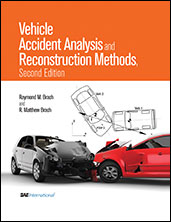Technical Paper
Tire Models for Vehicle Dynamic Simulation and Accident Reconstruction
2009-04-20
2009-01-0102
Various vehicle dynamic simulation software programs have been developed for use in reconstructing accidents. Typically these are used to analyze and reconstruct preimpact and postimpact vehicle motion. These simulation programs range from proprietary programs to commercially available packages. While the basic theory behind these simulations is Newton's laws of motion, some component modeling techniques differ from one program to another. This is particularly true of the modeling of tire force mechanics. Since tire forces control the vehicle motion predicted by a simulation, the tire mechanics model is a critical feature in simulation use, performance and accuracy. This is particularly true for accident reconstruction applications where vehicle motions can occur over wide ranging kinematic wheel conditions. Therefore a thorough understanding of the nature of tire forces is a necessary aspect of the proper formulation and use of a vehicle dynamics program.

